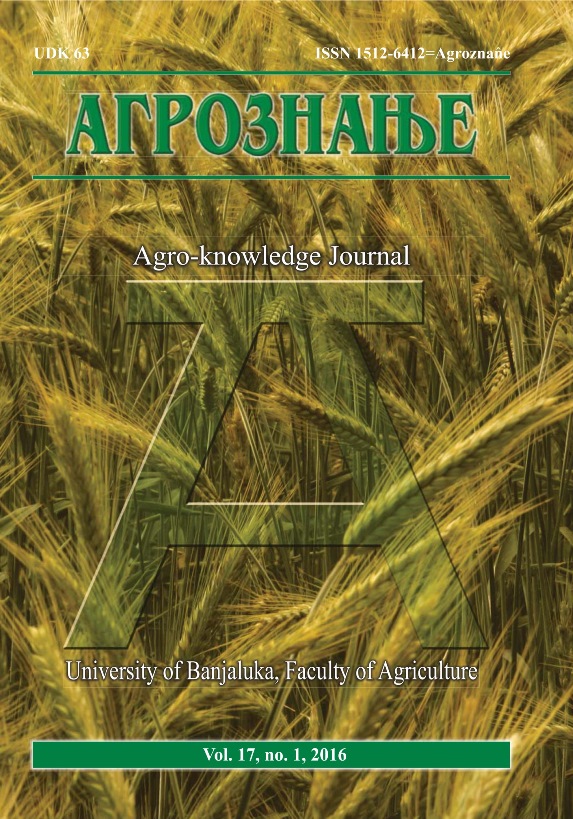Utilization of Different Types of Glucose Oxidase for Reduction of Glucose Concentration in Synthetic Grape Juice
DOI:
https://doi.org/10.7251/AGREN1601047PAbstract
One of the most promising techniques for oxidation of glucose into a gluconic acid is the utilization of the enzyme glucose oxidase. In order to optimize the process, two types of enzymes were used as catalysts for glucose oxidation in several model synthetic grape juices. The first one is a food grade enzyme Alphamalt Gloxy 5080 from Aspergillus niger. The other one is pure enzyme from Aspergillus niger, used as a sole or in a combination with catalase isolated from beef liver. Both the pure glucose solution and the synthetic grape juice were used as substrates for enzymatic pretreatment. The Alphamalt Gloxy 5080 enzyme, used in a concentration of 1 g/L, showed 77.60% substrate conversion of the glucose used in a concentration of 10 g/L. the pure glucose oxidase having concentration of 25 mg/L converted only 1.32% of glucose, while when combined with 15 μL catalase, the conversion was even 49.25%.

